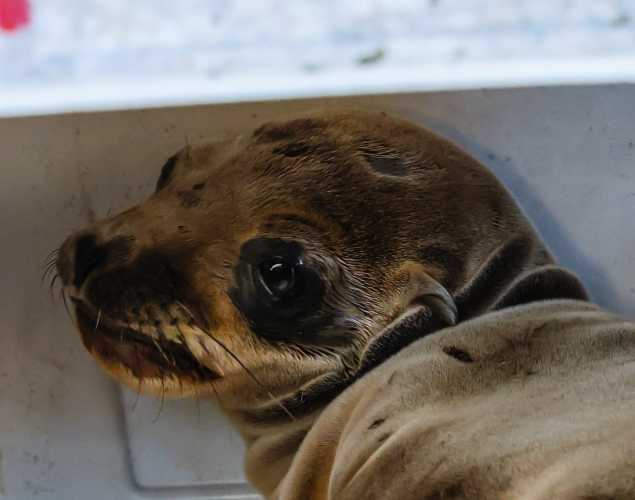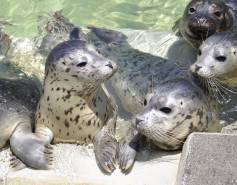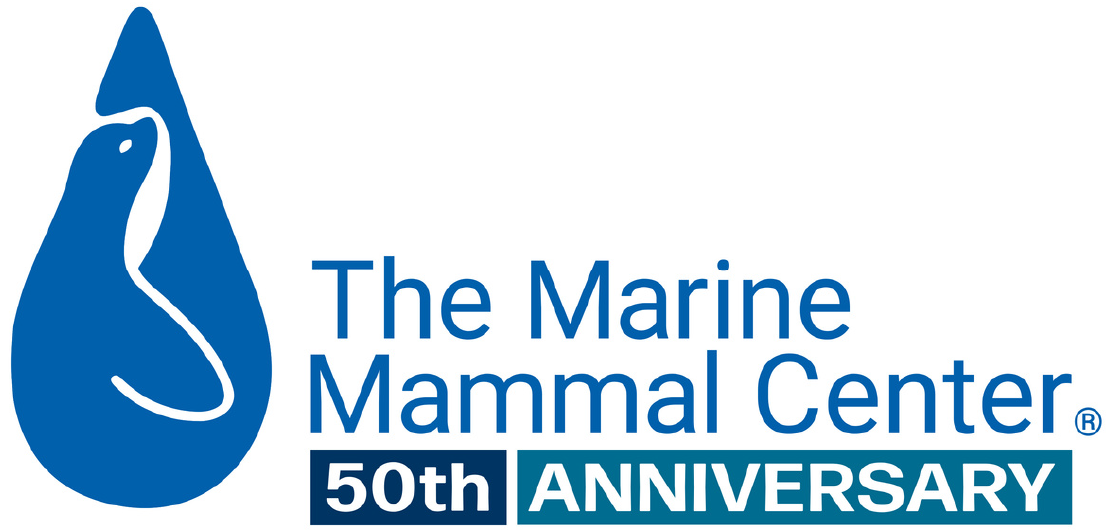
Novel Species of Neisseria Bacteria Isolated from Mouth of California Sea Lions
- Microbiology
Abstract
Three independent strains of Neisseria sp. were isolated from the oral cavity of California sea lions (Zalophus californianus) that were admitted to The Marine Mammal Center facilities in California, USA. The strains were isolated from oral swabs by cultivation on Trypticase Soy agar with 5% sheep blood under aerobic conditions. The 16S rRNA gene sequence of these three strains shared 99% similarity, but demonstrated only 97-98% nucleotide similarity to the phylogenetically closest relatives such as N. canis, N. zoodegmatis, N. animaloris, and N. dumasiana. These three strains also shared 99% sequence similarity of their rplF, rpoB, and gyrB gene sequences. Based on the biochemical tests alone (i.e., without genetic analysis of housekeeping genes), it is difficult to discriminate this novel species from N. canis; however, it can be easily discriminated from all phylogenetically closely related species using the sequencing analysis of its housekeeping genes (e.g., rplF, rpoB, or gyrB genes). Thus, genetic testing is indispensable for accurate identification of this species in a routine laboratory practice. The species is an obligate aerobe and able to grow in Mueller-Hinton broth supplemented with 6% NaCl, but the phylogenetically closely related species (N. canis, N. zoodegmatis, N. animaloris, and N. dumasiana) were not. Based on these phenotypic and genotypic characteristics and phylogenetic data, we conclude that these new strains represent a novel species of the genus Neisseria, for which the name Neisseria zalophi sp. nov. is proposed. The type strain is CSL 7565T (= ATCC BAA2455T = DSM 102031T).
Volokhov, D.V., Amselle, M., Bodeis-Jones, S., Delmonte, P., Zhang, S., Davidson, M., Gulland, F.M., Chizhikov, V.E. 2018. Neisseria zalophi sp. nov., isolated from oral cavity of California sea lions (Zalophus californianus). Archives of Microbiology. DOI: 10.1007/s00203-018-1499-x
Related Publications
{"image":"\/Animals\/Patients\/Harbor seals\/cropped-images\/hs-group-by-frances-farley-c-the-marine-mammal-center-1098-0-3190-2491-1678309999.jpg","alt":"group of harbor seals in a rehabilitation pool","title":"Rookery Through Rehabilitation: Microbial Community Assembly in Newborn Harbor Seals After Maternal Separation","link_url":"https:\/\/www.marinemammalcenter.org\/publications\/rookery-through-rehabilitation-microbial-community-assembly-in-newborn-harbor-seals-after-maternal-separation","label":"Research Paper"}

Rookery Through Rehabilitation: Microbial Community Assembly in Newborn Harbor Seals After Maternal Separation
Read More{"image":"\/Animals\/Wild\/Bottlenose dolphin\/cropped-images\/bottlenose-dolphin-by-bill-keener-c-the-marine-mammal-center-3-10-10-3899-3046-1685659921.jpg","alt":"two bottlenose dolphins seen from above","title":"Meticillin-Resistant MRSA Associated Dolphin Mortality and the Subsequent Facility Decolonisation Protocol","link_url":"https:\/\/www.marinemammalcenter.org\/publications\/meticillin-resistant-mrsa-associated-dolphin-mortality-and-the-subsequent-facility-decolonisation-protocol","label":"Research Paper"}

Meticillin-Resistant MRSA Associated Dolphin Mortality and the Subsequent Facility Decolonisation Protocol
Read More{"image":"\/Animals\/Patients\/California sea lions\/2021\/cropped-images\/csl-keoki-by-bill-hunnewell-c-the-marine-mammal-center-533-0-3113-2431-1717544987.jpg","alt":"California sea lion Keoki","title":"Hypervirulent Klebsiella Pneumoniae in California Sea Lions: Pathologic Findings in Natural Infections","link_url":"https:\/\/www.marinemammalcenter.org\/publications\/hypervirulent-klebsiella-pneumoniae-in-california-sea-lions-pathologic-findings-in-natural-infections","label":"Research Paper"}

Hypervirulent Klebsiella Pneumoniae in California Sea Lions: Pathologic Findings in Natural Infections
Read More{"image":"\/Animals\/Wild\/California sea lion\/cropped-images\/csl-on-a-rock-shutterstock-87-0-1270-992-1740414498.jpg","alt":"sea lion on rock","title":"Klebsiella pneumoniae in stranded california sea lions (Zalophus californianus) of central California between 2017-2022","link_url":"https:\/\/www.marinemammalcenter.org\/publications\/klebsiella-pneumoniae-in-stranded-california-sea-lions-zalophus-californianus-of-central-california-between-2017-2022","label":"Research Paper"}

Klebsiella pneumoniae in stranded california sea lions (Zalophus californianus) of central California between 2017-2022
Read MoreRecent News
{"image":"\/Animals\/Patients\/Harbor seals\/2020\/cropped-images\/hs-barnwood-by-bill-hunnewell-c-the-marine-mammal-center-315-0-3299-2577-1607370547.jpg","alt":"harbor seal Barnwood","title":"Last-Minute Gift Guide \u2013 Top Gifts that Give Back to Marine Animals","link_url":"https:\/\/www.marinemammalcenter.org\/news\/last-minute-gift-guide","label":"News Update","date":"2025-12-18 01:00:00"}

Last-Minute Gift Guide – Top Gifts that Give Back to Marine Animals
December 18, 2025
Read More{"image":"\/Animals\/Patients\/Hawaiian monk seals\/2025\/cropped-images\/b-ru72admission-to-ke-kai-ola112125photo-c-the-marine-mammal-center-noaa-permit-24359-0-364-1270-992-1766095407.jpg","alt":"A newborn Hawaiian monk seal pup with a black coat in rehabilitative care.","title":"Newborn Hawaiian Monk Seal Pup Now Receiving Care","link_url":"https:\/\/www.marinemammalcenter.org\/news\/newborn-hawaiian-monk-seal-pup-now-receiving-care","label":"Patient Update","date":"2025-12-18 01:00:00"}

{"image":"\/Animals\/Patients\/Hawaiian monk seals\/2025\/cropped-images\/d-ru28release-exam-at-ke-kai-ola111025photo-by-giancarlo-rulli-c-the-marine-mammal-center-noaa-permit-24359-0-0-1270-992-1764620886.jpg","alt":"","title":"Bird Flu Vaccine Trial Offers Hope for Protecting Hawaiian Monk Seals","link_url":"https:\/\/www.marinemammalcenter.org\/news\/bird-flu-vaccine-trial-may-offer-hope-for-protecting-hawaiian-monk-seals","label":"News Update","date":"2025-12-01 08:13:00"}

Bird Flu Vaccine Trial Offers Hope for Protecting Hawaiian Monk Seals
December 1, 2025
Read More{"image":"\/Animals\/Patients\/Hawaiian monk seals\/2021\/hms-pp08-by-sheila-latta-c-the-marine-mammal-center-noaa-permit-18786.jpg","alt":"Hawaiian monk seal","title":"The New York Times: Inside the Bird-Flu Vaccine Trial for Monk Seals","link_url":"https:\/\/www.marinemammalcenter.org\/news\/the-new-york-times-inside-the-bird-flu-vaccine-trial-for-monk-seals","label":"In the News","date":"2025-12-01 01:00:00"}

The New York Times: Inside the Bird-Flu Vaccine Trial for Monk Seals
December 1, 2025
Read More